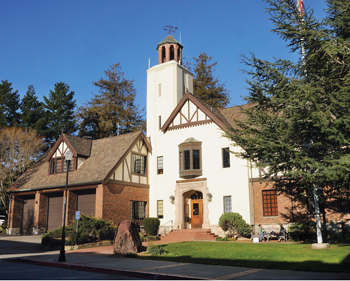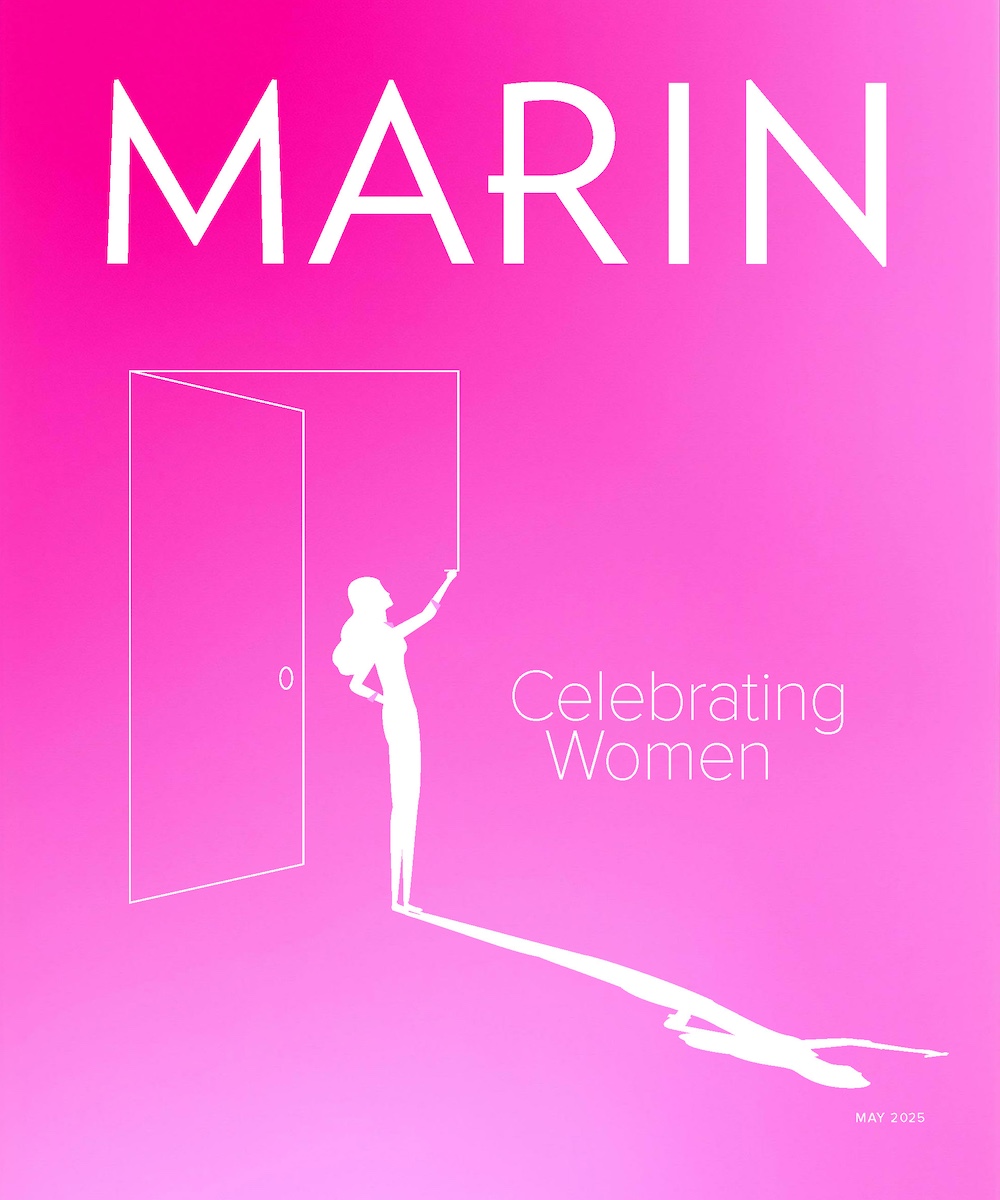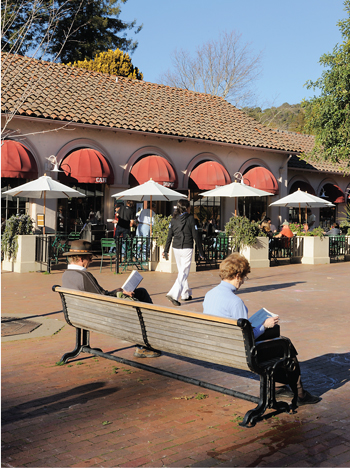Nestled in the hillsides and canyons of the southeast flank of Mount Tamalpais are 4.8 square miles of a very special and vibrant Marin city named for the first sawmill, the Old Mill, in California.
But if you ask Mill Valley residents what their most important resource is these days, they will tell you it is the small-town lifestyle, the beautiful sun-soaked communities linked by twisting streets and, of course, the quality of the diverse group of residents who call the area home.
Two such residents are local business owners Dave and Doug Canepa, who took over ownership of the ever-popular Mill Valley Market from their father in 1990. The store was opened in 1929 by their grandfather Frank on the day of the Mount Tamalpais fire. “My grandfather spent his first day of business fighting the fire in his suit,” Dave Canepa says. “We started the way our dad started, by sweeping floors.”
Dave Canepa credits his father, who moved the store to its current location in 1955, with making the market what it is today—a community hub with a mix of upscale ingredients and everyday items. With four generations of Canepas living and working in Mill Valley, it makes sense that they would find a way to give a little back, and they have, to the tune of $600,000 since 1992 as part of their Shop and Give program.
“We have a great community,” Dave Canepa says. “There is no better place to live and work.”
The mayor of Mill Valley, Andrew Berman, discovered the same thing after moving here with his wife from San Francisco’s Noe Valley in 1993. “My kids are growing up and their dad is the mayor,” Berman says. “It’s safe and it is harder and harder to get that these days—Marin provides that.”
Berman points to events such as the Mill Valley Film Festival, the Fall Arts Festival, Shakespeare in the Park and musi c all year long in venues such as 142 Throckmorton and the currently closed Sweetwater Saloon as major attractions.
c all year long in venues such as 142 Throckmorton and the currently closed Sweetwater Saloon as major attractions.
“I love the melting pot that brought Mill Valley together,” Berman says. “We are a little bohemian, and we support the arts here.”
Another aspect of the town Berman would like to see continued support for are the local merchants. “We don’t have a lot of chains here,” he says. “But we can’t have unique merchants without the revenue to support them.” Among these are places such as Maison Reve, Alpha Dog, the Depot, La Coppa, the 2 AM Club, Bungalow 44, Vasco’s, Joe’s Taco Lounge and the Tyler Florence Shop, recently relocated from New York to the building were the Mill Valley–born Banana Republic once lived.
Berman says his political career got an unusual start after residents asked him to run following a successful stint on the planning commission, where he helped develop rules for hillside building that are still in use today. As it turns out, “Mill Valley is a great town to work for.” Going forward, Berman sees emergency preparedness, preservation of the character and uniqueness of the town and fiscal responsibility as the biggest issues facing the almost 14,000 residents.
Decker Bullock Sotheby’s agent and Mill Valley resident Dave DuPont agrees that the future looks bright for the town Jack Kerouac called Mill City in his famous novel, On The Road. “The lifestyle is  healthy; you have clean water and air and good schools,” DuPont says. “There is nothing like Mill Valley in the world; it is a safe place to put money.”
healthy; you have clean water and air and good schools,” DuPont says. “There is nothing like Mill Valley in the world; it is a safe place to put money.”
And many did in 2008, with 254 single-family residences bought or sold for an average price of $1.2 million from the stock of just over 6,000 homes. Of these, the low end was $500,000, while the high hit $5.3 million. The low end for a condo purchase was $295,000. Interestingly, owners account for only about 65 percent of the market, with renters making up the rest.
“It is an artistic and hip community,” DuPont says. “I like the town and the feeling of it.”
Whether you are in the house-hunting market or just stopping by for a visit, it is likely that you’ll find Mill Valley and its residents drawing you back for a return trip soon.



